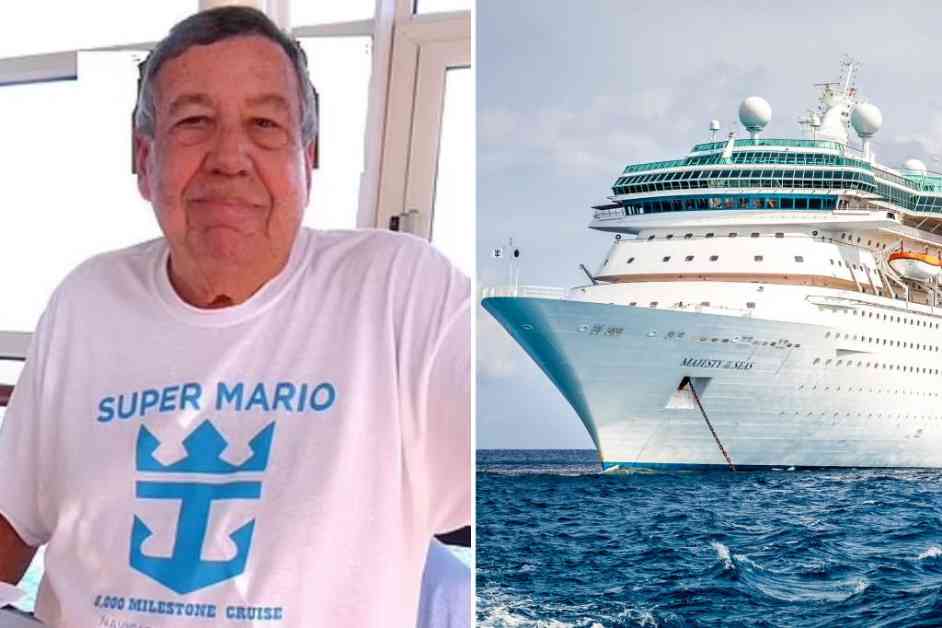Mario Salcedo, a man who has made cruise ships his home for the past 25 years, recently shared an unusual health effect he has experienced from spending extended periods at sea. In an interview with Conde Nast Traveler, the Cuban-born businessman disclosed that he has lost his “land legs,” causing him to sway uncontrollably and struggle to walk in a straight line. This revelation sheds light on the fascinating world of cruise ship living, where Salcedo has become a legendary figure known as “Super Mario” among cruise enthusiasts.
Life at Sea: A Unique Journey
Salcedo’s remarkable lifestyle choice came to the forefront as he celebrated his 1,000th voyage with Royal Caribbean, marking a milestone in his enduring love affair with the ocean. Embarking on an 11-night journey aboard the Explorer of the Seas, a 3,286-passenger vessel that set sail from Miami on January 5, Salcedo’s dedication to cruise ship living was on full display. His commitment to this unconventional way of life is evident in his annual expenditure of approximately $101,000 on cruises, allowing him to revel in relaxation and enjoyment while spending minimal time working each day.
Elaine Warren, the founder and CEO of The Family Cruise Companion, offered insights into Salcedo’s condition, describing his loss of “land legs” as a manifestation of Mal de débarquement syndrome. This syndrome, a rare vestibular disorder, causes individuals to experience persistent sensations of movement even when stationary. Warren highlighted the stark transition from viewing cruise ship living as a dream vacation to the reality of residing at sea, where unexpected physical challenges can arise.
The Perils of Prolonged Cruising
Warren emphasized the physical adjustments that long-term cruisers like Salcedo must navigate, including adapting to the constant motion of the ship. Over time, the body acclimates to the vessel’s gentle sway, leading to the development of “sea legs” that make walking on solid ground a disorienting experience. She recounted anecdotes from individuals who spent months at sea, recounting the sensation of feeling as though the land itself was in motion upon returning to terra firma. This shift in perception underscores the profound impact that extended periods at sea can have on one’s equilibrium and sense of spatial awareness.
According to the Cleveland Clinic, Mal de débarquement syndrome typically resolves within 24 hours but can persist for months or even years in some cases. Salcedo’s unwavering devotion to life on the high seas, despite a brief hiatus during the COVID-19 pandemic in 2020, underscores the allure of cruise ship living and the unique challenges it presents to those who embrace it. His fondness for the royal treatment he receives from cruise staff and captains exemplifies the sense of community and belonging that draws individuals like him to this unconventional lifestyle.
Salcedo’s journey serves as a testament to the captivating allure of life at sea, where the boundaries between land and water blur, and the rhythms of the ocean become a way of life. As he continues to navigate the challenges of his unique existence, his story offers a glimpse into a world where the siren call of the open sea beckons with promises of adventure, camaraderie, and the enduring thrill of the unknown.










